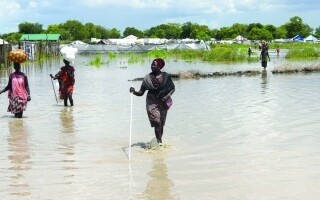
Activists communicate about trafficking people in different corners of the world, including the Philippines, where after the typhoon in 2013 trafficking of women has increased. Due to climate change, many people are losing their means of existence and are forced to leave their homes to seek work abroad. For women and girls, this represents a heightened risk of sexual exploitation. They suffer to a greater extent than men, as climate-related catastrophes deepen gender inequality.
Especially hard hit are women and girls during crises resulting from violent disasters, writes the press. They are particularly faced with the peril of sexual violence and human trafficking when they have to flee their homes due to natural disasters. Organizations are trying to help women and girls cope with difficulties through investments in education and training, including in agriculture.
In various corners of the world, women are fighting against climate changes affecting their health and well-being. In Brazil, for instance, women defend forests, preempting bigger companies from their degradation and limiting access to palms, on which they depend. They create movements to protect nature and support sustainable agriculture.
In rural areas of Guatemala, women suffer from prolonged drought and natural disasters, forcing rural families to seek better living conditions elsewhere. These relocations create greater obstacles for women and girls than for men, who have the responsibility for family protection and earnings.
In Bangladesh, many girls are forced to marry at an early age due to their families' financial difficulties caused by climate changes. Consequently, their education and future become threatened. One such distressing case involves an 11-year-old girl named Maruva, who was forced into marriage in a bid to secure economic survival.
In Kenya, climate crises trigger severe floods and droughts, threatening farmers and raising the levels of violence, especially against women. Scholars argue that climate changes exacerbate violence. Meanwhile, organizations strive to combat these issues, investing in women and girls, teaching them new skills, and supporting them in times of crises and poverty.














